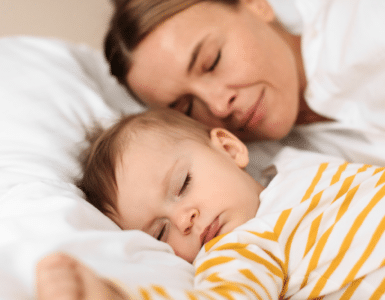In fact, the 1800s was quite ahead of its time because babies of any gender used to wear white, unisex dresses since it was easier to change their diapers. White was common for babies since it was easier to wash.
This was so common that the 32nd president of the United States, Franklin Delano Roosevelt, wore dresses as a kid and even had long, lovely locks!
So how did pink become associated with girls and blue become associated with boys?
The origin of how pink became associated with girls and blue with boys is still being debated among historians and scholars. Some ads in the early 1900s promoted pink for girls and blue for boys and some promoted the opposite. No one can really pin down how this gender stereotyping with those colors started.
What we do know is that by the 1980s, clothing and toy manufacturers began pushing the notion that pink was for girls and blue was for boys and parents just went along with it.
Cut to today, where the newer generation of parents are questioning these gender stereotypes and are opting for gender-neutral colors in their kids’ nurseries as well as opting for gender-neutral names and upbringing where they let their kids play with and wear anything they want regardless of their gender.
Some are even bringing up their child using gender neutral pronouns like “they/their,” and letting their child decide what gender they want to be.
Now #genderneutralparenting is trending on TikTok and gender-neutral nursery pics are flooding Pinterest, Instagram, and other photo-sharing apps. Even social media icon Kylie Jenner, revealed her neutral-colored nursery last year. Even though she never specifically stated it was a gender-neutral nursery, a look at the room’s white and beige tones and decor certainly makes it so.
ALSO: What is the ‘Sad Beige Baby’ Trend?
Why are more parents nowadays rejecting pink and blue baby clothes and raising their kids in more gender-neutral way?
In an interview with Your California Life, Dr. Frieda Birnbaum, a psychologist, and psychotherapist said, “Parents want their children to be treated equally, no matter what their gender is. So, there’s no stigma, and there’s no discrimination when there’s a name involved. And it frees the children, also, to have an identity that encompasses who they are rather than how they’re supposed to be seen…male or female.”
One of the most vocal gender-neutral parents is a non-binary parent from Florida named Arlo Dennis. Four years ago, they appeared all over media outlets, including Dr. Phil, talking about how they’re raising their child in a gender-neutral way. They were applauded by some and unfortunately trolled by many, but regardless of public opinion, they continue to advocate for gender-neutral parenting and appeared in an update video last year in 10 Tampa Bay.
In their interview, Dennis reveals, “In our home, they’re really just allowed to do whatever feels good to them so they’re still using they/them but sometimes they’ll be like, uh, maybe, I want to be a girl and I’m like what does a girl mean to you? And their answers are always different.”
Gender-neutral parenting is still a fairly new concept and despite its growing popularity on the news and on social media, it’s still very niche and not widely accepted at all.
As society’s views on gender roles evolve, so does the concept of gender-neutral parenting. There isn’t a one-size fits all approach, it depends on the parents, the culture, and more importantly, the child.
Some parents might just want their nursery to be more gender-neutral but will still pick a name that is gendered. Some parents will raise their child as a chosen gender but will teach them that they can do anything and like anything regardless of their gender. And some parents are more like Dennis who is going full gender-neutral and using gender neutral names and pronouns for their children. It’s all open to interpretation.
What do you think about gender-neutral parenting? Let us know in the comments below!










Add comment